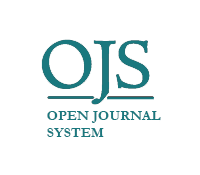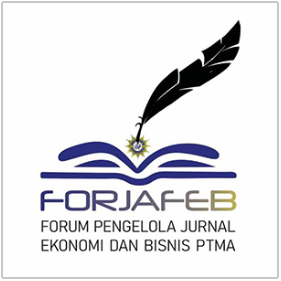Factors Affecting The Use Of Digital Financial Services Among Moslems: An Attempt To Extend The Technology Acceptance Model
DOI:
https://doi.org/10.22219/jrak.v12i1.18151Keywords:
digitization, perceived benefit, perceived ease of use, halal integrity, digital leadership.Abstract
Digital financial services has been popular, particularly in the Covid-19 pandemic where human mobility is limited and sosial distancing is strictly enforced. Therefore, it is not surprising if the use of digital financial services has been increasingly significant. Based on Technology Acceptance Model (TAM), this study aims at examining the effect of perceived benefit and perceived ease of use on moslems’ intention to adopt digital financial services. To improve the explanatory power of TAM, this study also examines the effect of halal integrity and digital leadership which are expected to be relevant for moslems and implementing at individual level. Quantitative data were obtained from 92 respondents which were selected using convenience technique sampling. Data were analyzed using multiple linear regression and the findings indicate that perceived benefit, perceived ease of use, and digital leadership have a positive effect on moslems intention to use digital financial services. These findings imply that digital technology providers need to pay attention to these three key factors when developing a new digital technology, particularly in case of moslems adopters.
Downloads
References
Abbas, H. A., & Hamdy, H. I. (2015). Determinants of continuance intention factor in Kuwait communication market: Case study of Zain-Kuwait. Computers in Human Behavior, 49, 648-657.
Abdinoor, A., & Mbamba, U. O. L. (2017). Factors influencing consumers’
adoption of mobile financial services in Tanzania. Cogent Business & Management, 4, 1-19.
AbuShanab, E., & Pearson, J. (2007). Internet banking in Jordan: The unified theory of acceptance and use of technology (UTAUT) perspective. Journal of Systems and Information Technology, 9(1), 78-97.
Ajzen, I. (1991). The theory of planned behaviour. Organisational Behaviour and Human Decision Processes, 50, 179-211.
Benbasat, I., & Barki, H. (2007). Quo vadis TAM? Journal of the Association for Information Systems, 8(4), 211-218.
Benbasat, I., & Zmud, R. W. (1999). Empirical research in information systems: The practice of relevance. Management Information System Quarterly, 23(1), 3-16.
Berger, M., Matt, C., Gonsch, J., & Hess, T. (2019). The time is not yet ripe, is it? How the value of waiting and incentives affect users' switching behaviors for smart home devices. Schmalenbach Business Review, 71(1), 91–123.
Boonsiritomachai, W., & Pitchayadejanant, K. (2017). Determinants affecting mobile banking adoption by generation Y based on the Unified Theory of Acceptance and Use of Technology Model modified by the Technology Acceptance Model concept. Kasetsart Journal of Social Sciences,1-10.
Bouwman, H., & Van De Wijngaert, L. (2009). Coppers context, and conjoints: A reassessment of TAM. Journal of Information Technology, 24(2), 186-201.
Catherine, N., Geofrey, K. M., Moya, M. B., & Aballo, G. (2017). Effort expectancy, performance expectancy, social influence and facilitating conditions as predictors of behavioral intentions to use ATMS with fingerprint authentication in Ugandan Banks. Global Journal of Computer Science and Technology: E Network, Web & Security, 17(5).
Chen, Y. H., Chengular-Smith, I. (2015). Factors influencing students use of a library web portal: Applying course-integrated information literacy instruction as an intervention. The Internet and Higher Education, 26, 42-55.
Chiu, C. M., & Wang, E. T. G. (2008). Understanding web-based learning continuance intention: The role of subjective task value. Information & Management, 45(3), 194-201.
Curtis, L., Edwards, C., Fraser, K. L., Gudelsky, S., Holmquist, J., & Thornton, K., (2010). Adoption of social media for public relations by nonprofit organizations. Public Relations Review, 36(1), 90-92.
Davidekova, M., & Manazmentu, V. S. (2016). Digitalization of society: Smartphone - a threat? Available at https://www.researchgate.net/publication/308966607 (accessed on 20 May 2020).
Davis, F. D. (1989). Perceived usefulness, perceived ease of use, and user acceptance of information technology. Management Information System Quarterly, 13(4), 319-340.
Dhraief, M. Z., Romdhani, S. B., Dhehibi, B., Zlaoui, M. O., Jebali, O., & Youssef, S. B. (2018). Factors Affecting the Adoption of Innovative Technologies by Livestock Farmers in Arid Area of Tunisia. Fara Research Report, 3(5), 1-22.
Ghalandari, K. (2012). The effect of performance expectancy, effort expectancy, social influence and facilitating conditions on acceptance of e-banking services in Iran: The moderating role of age and gender. Middle-East Journal of Scientific Research, 12(6), 801-807.
Hamid, A. A., Razak, F. Z. A, Bakar, A. A., & Abdullah, W. S. W. (2016). The effects of perceived usefulness and perceived ease of use on continuance intention to use e-government. Procedia Economics and Finance, 35, 644-649.
Ho, G., Stephens, G. & Jamieson, R. (2003). Biometric authentication adoption issues. Australasian Conference on Information Systems, 1-12.
Kohilavani, Y. T. A., Febrianto, N. A., Abdullah, W. & Tajul Aris, A. (2012). A decision tree based approach for the identification of halal critical control points for slaughtering according to Islamic dietary law. Internet Journal of Food Safety, 14, 48-53.
Kohilavani, Z. W., Febrianto, N., Zakariya, N., Abdullah, W. & Yang, T. (2013). Embedding Islamic dietary requirements into HACCP approach. Food Control, 34(2), 607-612.
Larjovuori, R. L., Bordi, L., Makiniemi, J. P., Heikkila-Tammi, K. (2016). The role of leadership and employee well-being in organizational digitalization. Available at: https://www.researchgate.net/profile/ Milena_Jael_Silva-Morales/publication/308033532_Changes_in_the_intellectual_structure_of_service_innovation_and_service_system_research_in_the_digital_age_a_bibliometric_analysis_from_1986_to_ 2015/links/5b1844000f7e9b68b4245425/Changes-in-the-intellectual-structure-of-service-innovation-and- service-system-research-in-the-digital-age-a-bibliometric-analysis-from-1986-to-2015.pdf#page=1153 (accessed on 23 July 2019).
Legris, P., Ingham, J., & Collerette, P. (2003). Why do people use information technology? A critical review of the technology acceptance model. Information & Management, 40(3), 191-204.
Li, H, & Liu, Y. (2014). Understanding post-adoption behaviors of e-service users in the context of online travel services. Information & Management, 51(8), 1043-1052.
Lin, W. S., & Wang, C., H. (2012). Antecedences to continued intentions of adopting e-learning system in blended learning instruction: A contingency framework based on models of information system success and task-technology fit. Computers & Education, 58(1), 88-99.
Lorenzo, A. M. C., Obra, A. R. D. A., Meléndez, A. P., & Angulo, J. J. P. (2020).
Digitalization of agri‐cooperatives in the smart agriculture context. Proposal of a digital diagnosis tool. Sustainability, 12, 1-15.
Manning, L., & Soon, J.M. (2014). Developing systems to control food adulteration. Food Policy, 49(1), 23-32.
Marchewka, J. T., Liu, C., & Kostiwa, K. (2007). An application of the UTAUT model for understanding student perceptions using course management software. Communications of the IIMA, 7(2), 93-104.
Mathieson, K., & Keil, M. (1998). Beyond the interface: Ease of use and task/technology fit. Information & Management, 34(4), 221-230.
Matt, C., Trenz, M., Cheung, C. M. K., & Turel, O. (2019). The digitization of the individual: conceptual foundations and opportunities for research. Electronic Markets, 29, 315–322.
Moore, G. C., & Benbasat, I. (1991). Development of an instrument to measure the perceptions of adopting an IT innovation. Information systems research, 2(3), 192-222.
Nunnally, J. C., & Bernstein, I. H. (1994). Psychometric theory, 3rd. McGraw-Hill, New York.
Park, N., Rhoads, M., Hou, J., & Lee, K. M. (2014). Understanding the acceptance of teleconferencing systems among employees: An extension of the technology acceptance model. Computers in Human Behavior, 39, 118-127.
Peng, R., Xiong, L., & Yang, Z. (2012). Exploring tourist adoption of tourism mobile payment: An empirical analysis. Journal of Theoretical and Applied Electronic Commerce Research, 7(1), 21-33.
Rachinger, M., Rauter, R., Muller, C., Vorraber, W., & Schirgi, E. (2018). Digitalization and its influence on business model innovation. Journal of Manufacturing Technology Management, 30(8), 1143-1160.
Salimon, M. G., Yusoff, R. Z. B., & Mohd Mokhtar, S. S. (2017). The mediating role of hedonic motivation on the relationship between adoption of e-banking and its determinants. International Journal of Bank Marketing, 35(4), 558-582.
Shaikh, A., & Karjaluoto, H. (2015). Mobile banking adoption: A literature review. Telematics and Informatics, 32(1), 129-142.
Soon, J. M., Chandia, M., & Regenstein, J. M. (2017). Halal integrity in the food supply chain. British Food Journal, 119(1), 3951.
Stojkoska, B. L. R., & Trivodaliev, K. V. (2017). A review of internet of things for smart home: Challenges and solutions. Journal of Cleaner Production, 140(3), 1454–1464.
Sun, Q., Cao, H., & You, J. (2010). Factors influencing the adoption of mobile service in China: An integration of tam. Journal of Computers, 5(5), 799-806.
Taherdoost, H. (2007). A review of technology acceptance and adoption models
and theories. Procedia Manufacturing, 22, 960–967.
Tang, J. T. E., Tang, T. I., Chiang, C. H. (2012). Blog learning: Effects of users’ usefulness and efficiency towards continuance intention. Behaviour & Information Techmology, 33(1), 36-50.
Taylor, S., & Todd, P. A. (1995). Understanding information technology usage: A test of competing models. Information Systems Research, 6(2), 144-176.
Unruh, G. & Kiron, D. (2017). Digital transformation on purpose. MIT Sloan Management Review, November(6).
Venkatesh, V., Morris, M. G., Davis, G. B., & Davis, F. D. (2003). User acceptance of information technology: Toward a unified view. Management Inforamtion System Quarterly, 27, 425-478.
Venkatesh, V., Thong, J. Y., & Xu, X. (2012). Consumer acceptance and use of information technology: Extending the unified theory of acceptance and use of technology. MIS Quarterly, 36(1), 157-178.
Wang, W., Ngai, E. W. T., & Wei, H. (2011). Explaining instant messaging continuance intention: The role of personality. International Journal of Human-Computer Interaction, 28(8), 500-510.
Yang, K. C. (2005). Exploring factors affecting the adoption of mobile commerce in Singapore. Telematics and Informatics, 22(3), 257-277.
Yousafzai, S. Y., Foxall, G. R., & Pallister, J. G. (2010). Explaining internet banking behavior: Theory of reasoned action, theory of planned behavior, or technology acceptance model? Journal of Applied Social Psychology, 40(5), 1172-1202.
Zailani, S., Kanapathy, K., Iranmanesh, M., & Tieman, M. (2015). Drivers of halal orientation strategy among halal food firms. British Food Journal, 117(8), 2143-2160.
Zarmpou, T., Saprikis, V., Vlachopoulou, M., & Singh, G. (2010). Investigating the influential factors towards mobile services adoption in Greece. Information Assurance and Security Letters, 1, 72-79.
Zeike, S., Bradbury, K., Lindert, L., & Pfaff, H. (2019). Digital leadership skills and associations with psychological well-being. International Journal of Environmental Research and Public Health, 16, 1-12.
Zulfakar, M. H., Jie, F. & Chan, C. (2012). Halal food supply chain integrity: From a literature review to a conceptual framework. 10th ANZAM Operations, Supply Chain and Services Management Symposium, Melbourne, Australia, 14-15th June 2012.
Zupancic, T., Verbeke, J., Achten, H., & Herneoja, A. (2016). Digital Leadership. Available at https://www.researchgate.net/publication/307569748 (accessed on 4 July 2020)
Downloads
Published
Issue
Section
License
Copyright (c) 2022 Poppy Dian Indira Kusuma, Bambang Agus Pramuka, Sugiarto, Icuk Rangga Bawono

This work is licensed under a Creative Commons Attribution 4.0 International License.

Jurnal Reviu Akuntansi dan Keuangan is licensed under a Creative Commons Attribution-NonCommercial-ShareAlike 4.0 International License.
Authors who publish with this journal agree to the following terms:
- Authors retain copyright and grant the journal right of first publication with the work simultaneously licensed under a Creative Commons Attribution-NonCommercial-ShareAlike 4.0 International License that allows others to share the work with an acknowledgement of the work's authorship and initial publication in this journal.
- Authors are able to enter into separate, additional contractual arrangements for the non-exclusive distribution of the journal's published version of the work (e.g., post it to an institutional repository or publish it in a book), with an acknowledgement of its initial publication in this journal.
- Authors are permitted and encouraged to post their work online (e.g., in institutional repositories or on their website) prior to and during the submission process, as it can lead to productive exchanges, as well as earlier and greater citation of published work (See The Effect of Open Access).










